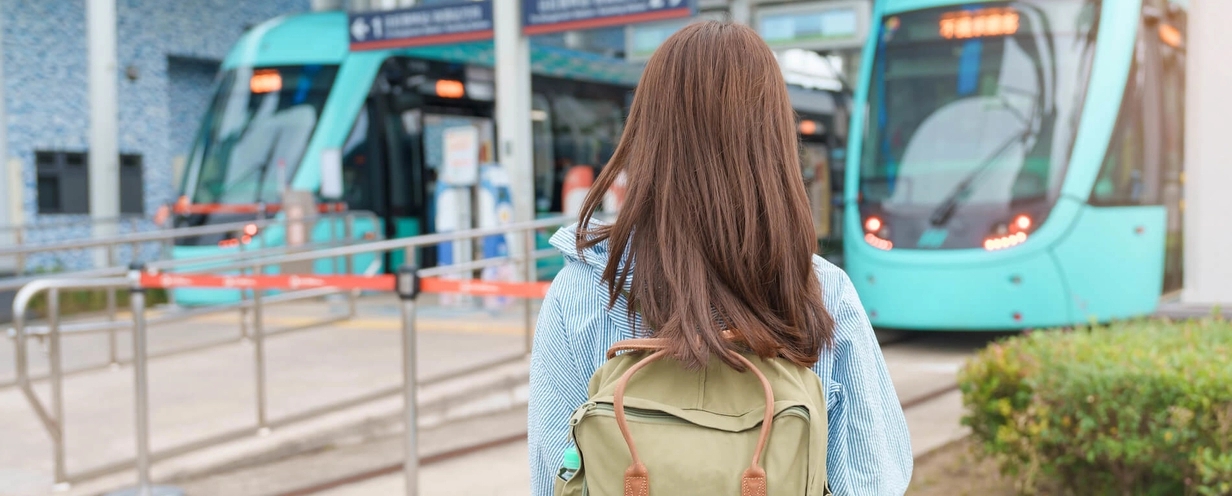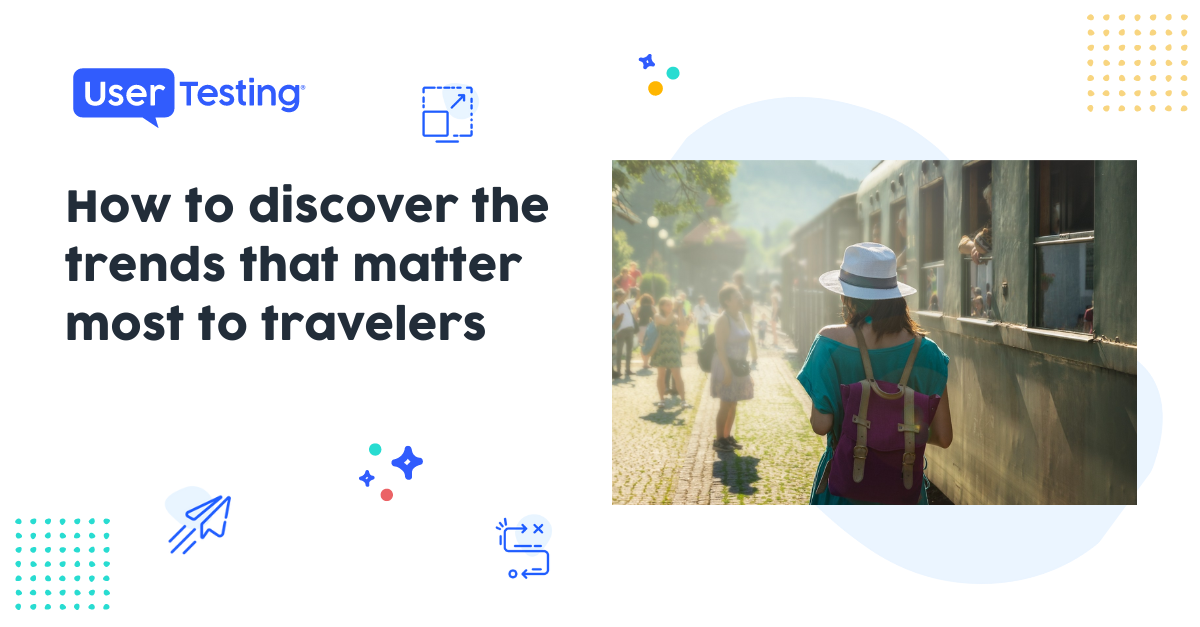
Why digital experience matters in travel and hospitality

The travel and hospitality industry has undergone a monumental digital transformation over the past decade. From using mobile apps to book a flight to reserving a hotel room over a website chatbot, the journey of a digital native is riddled with multiple instances of digital experiences.
These experiences have become an integral part of the travel journey. They profoundly influence user experience, loyalty, and overall relationship with brands.
Travel and hospitality organizations have created numerous digital assets, including apps and websites, to create a customer-centric experience that streamlines customer journeys and enhances convenience. To stay competitive and drive growth, you must also deliver seamless, personalized, consistent digital experiences across every touchpoint.
What is the digitalization of the travel and hospitality industry?
Digital experience in travel and hospitality refers to the proliferation of technologies transforming how travelers research, plan, book, experience, and share trips. Key hallmarks of travel and hospitality industry digitalization include:
- Digitizing services and touchpoints throughout the travel journey: Airlines, hotels, cruises, and tours now provide app-enabled, paperless experiences through websites, mobile apps, kiosks, in-destination technologies, qr codes, and more.
- Harnessing data and analytics to gain customer insights: Predictive analytics identifies new opportunities that can drive the personalization of trips and experiences based on traveler preferences and behaviors.
- Adopting emerging technologies: Artificial intelligence (AI), virtual and augmented reality (VR/AR), Internet of Things (IoT), automation, biometrics, and other new technologies facilitate more seamless, contextualized travels. AI chatbots handle customer queries efficiently, while VR inspires travelers with destination reviews.
- Building omnichannel experiences: Travelers can research on a phone, book on the web, check in via a kiosk, and access information throughout their trip digitally.
- Leveraging mobile connectivity and devices: Apps, messaging, notifications, and other features allow constant, real-time communication with customers throughout their journey.
Related reading: How to test QR code UX: the dos and don'ts
How digital touchpoints impact the overall customer journey
The digital experience in travel and hospitality includes every customer interaction with a brand across both online and offline channels throughout the travel journey. These digital touchpoints collectively shape travelers' perceptions, satisfaction, and brand affinity.
A seamless sequence of interactions across channels is crucial for customer satisfaction. Here are some key ways digital touchpoints impact the overall customer journey:
Websites and mobile apps
Websites and mobile apps are essential for customers to research, evaluate, and book their trips. The design and functionality of these platforms directly impact the customer experience and booking rates. The information architecture of a website or app determines how easily customers can find the information they need, while a visually appealing design with straightforward navigation enhances the user experience.
Brands that invest in creating well-designed and user-friendly websites and apps are more likely to attract and retain customers, driving growth in the industry. Ease of use is crucial, as customers should be able to navigate through the platform and complete tasks without complications. Streamlined and efficient conversion workflows guide users through booking and increase conversion rates.
See how Costco Travel improves its website user experience.
Emails and messaging
Emails and messaging play a crucial role in the digital customer experience. For example, booking confirmations provide customers with peace of mind that their reservation has been successful and serve as a touchpoint to build excitement and anticipation for the upcoming trip.
Personalized pre-trip communications can provide travelers with important information, such as transportation details, recommended activities, and tips, to enhance their overall experience. You can use emails and messaging to deliver personalized promotions tailored to the customer's preferences and behavior. By analyzing customer data, you can send targeted offers and discounts and increase the likelihood of additional purchases and upselling.
Post-trip emails solidify memories and maintain a connection with the customer. These emails can include personalized trip highlights, encouraging customers to share their experiences on social media or leave reviews, influencing future travelers.
Messaging also plays a vital role in providing real-time support to travelers. Whether answering questions, addressing concerns, or assisting during travel disruptions, messaging offers travelers a convenient and efficient way to communicate with brands.
Airport and transit experiences
Digitalizing airport and transit experiences has significantly enhanced convenience and efficiency during travel. Online and kiosk check-in options have become standard practices, allowing travelers to bypass long check-in lines at the airport. It saves time and reduces stress, particularly during peak travel periods.
Digital technologies have also transformed airport wayfinding. Interactive maps and signage on mobile apps or digital kiosks guide travelers through the airport, ensuring they reach their gates on time. It eliminates the need for paper maps or asking for directions, elevating the overall airport experience.
During the flight itself, the availability of inflight Wi-Fi and entertainment apps have become expected amenities. Inflight Wi-Fi allows travelers to stay connected, work, or entertain themselves during the journey. Entertainment apps deliver access to a range of movies, TV shows, music, and other content, giving travelers a more enjoyable and personalized inflight experience.
These digital advancements in airport and transit experiences have streamlined travel processes, saved time, and improved the overall journey for travelers. The convenience and entertainment options these digital touchpoints furnish contribute to a more positive and enjoyable trip.
See how WestJet improves its customer experience.
In-destination digital touchpoints
In-destination digital touchpoints play a significant role in optimizing the on-site experience for travelers. Hotel and resort apps enable guests to access services and amenities conveniently. From ordering room service to booking spa treatments or requesting housekeeping, these apps provide guests with a seamless and personalized experience. They supply information about local attractions, dining options, and events.
In-room tablets or TVs provide an additional level of convenience for guests. These devices control room temperature and lighting, access entertainment options, and even order services directly from the comfort of the room. They also increase hotel operational efficiency by reducing the need for manual service requests.
Interactive displays in lobbies offer guests a wealth of information about the hotel and nearby attractions. They can produce maps, directions, and recommendations, helping guests navigate their surroundings and discover hidden gems.
Resort wearables, such as interactive wristbands, supply seamless access to various amenities and services. Guests can use these wearable devices to unlock their hotel room, make purchases within the resort, and even personalize their experience by customizing preferences for activities or dining.
Post-trip moments
Travel reviews and ratings on platforms such as TripAdvisor, Yelp, and Google Reviews are potent sources of information and influence for prospective travelers. Positive reviews can attract new customers, while negative reviews can deter them. With digital offerings, you make it easy for satisfied customers to share their pleasure, so the scales aren't tipped unfairly against you by negative reviews.
In addition to reviews, getting customer feedback is a valuable way to improve services and offerings. Post-trip surveys allow travelers to share their experiences, rate different aspects of their trip, and provide suggestions for improvement. The feedback helps you identify areas of strength and areas that need attention to elevate the overall customer experience and drive customer loyalty.
Social media sharing has also become a significant driver of influence in the travel industry. Travelers often share their experiences, photos, and recommendations on Instagram, Facebook, Twitter, and TikTok. This user-generated content acts as a powerful endorsement and free marketing for brands.
By encouraging customers to share their adventures and providing branded hashtags or geotags, you can amplify your reach and engage with a broader audience of potential customers. Delivering excellent digital experiences across all the moments above, aligned into a seamless omnichannel sequence, drives growth and customer retention.
See how Expedia Group reduces the time and cost of customer interviews.
How digitalization has transformed the way people plan and book trips
The rise of online travel agencies (OTAs) like Expedia and TripAdvisor dramatically changed how travelers research and book trips compared to consulting offline travel agents. OTAs made self-service trip planning convenient by aggregating travel inventory, options, and reviews in one digital platform. Meta-search sites further enhanced the ability to compare options across providers.
Today's travelers leverage digital channels such as search engines, destination sites, OTAs, brand sites, meta-search, and social media networks across all trip planning stages. These offer convenience in several essential aspects:
- Review sites and forums provide destination advice from other travelers.
- Brand and OTA sites allow customizing flights, hotels, and packages online.
- Mobile is central to trip planning and booking.
- Travel booking apps like Hopper enable on-the-go flexibility to evaluate destinations and options.
- Personalization capabilities powered by AI algorithms contribute tailored recommendations to travelers based on data like past trips, browsing history, and observed patterns.
- Digital bookings reduce errors and paper waste compared to manual methods.
- Post-booking apps offer self-service access to modify reservations as needed, expediting changes.
- Real-time communications like delay alerts keep customers updated.
The convenience and flexibility of digital trip planning and booking have transformed expectations. Today, around 82% of travelers use digital devices for research, and approximately 77% use them for booking their trips.
The importance of personalized experiences in elevating the travel experience
The concept of personalized experiences is familiar in the service industry. However, digital technology and data analytics give it unprecedented importance.
A personalized experience goes beyond just knowing your customer's name. It’s about understanding their preferences, past purchases, or behaviors to deliver relevant and timely offers or services.
Travel is a deeply personal activity. What one person loves about a trip, another might utterly detest. You must recognize the importance of personalized experiences in the travel and hospitality industry. Today's travelers seek more than efficient digital booking—they expect customization throughout their journey. Organizations can meet this expectation in several ways:
- During initial research, organizations can provide individualized recommendations on destinations, attractions, hotels, and more based on guests' past trips and browsing history data.
- Booking engines can tailor flight and hotel packages catered to the individual's unique needs and preferences. Travelers can select a room type, seat preferences, and other commodities that best fit their needs.
- After booking, check-in communications can make travelers feel valued by addressing them by name, recognizing the loyalty status tier, and recommending relevant services.
- In-destination mobile apps and IoT allow hotels and cruises to meet customers' needs and desires by customizing in-room ambiance, recommending onboard activities based on interests, sending special offers for nearby attractions, and much more.
- Post-trip and personalized trip highlight re-cap emails aid memory retention. Referencing specific experiences and moments makes communication feel customized versus generic.
- Loyalty programs analyze past stays, spending, and preferences to offer exclusive rewards, room upgrades, and elite status tiers. Recognition of lifetime value strengthens brand attachment.
Personalization makes each traveler feel unique while forging more meaningful engagements that boost satisfaction and loyalty.
How digital customer experiences influence customer satisfaction
How your brand crafts the digital customer experience significantly impacts traveler satisfaction and retention. At every stage, digital experience gaps become missed opportunities to connect, while digital pitfalls risk alienating customers. Glitchy technologies, confusing interfaces, and travel disruptions magnify frustrations. Negative digital experiences erode brand value and trust. Travelers lamenting poor digital experiences on review sites damage brand reputations.
The convenience and automation of digital booking, contactless payments, and mobile check-in delights time-crunched travelers. Intuitively designed apps that make accessing information and services effortless during trips bolster satisfaction. Consistent experiences across web and mobile channels minimize frustration. Delivering premium Wi-Fi and digital amenities like apps earns positive sentiment.
With seamless convenience, digital channels become go-to sources before, during, and after trips. A positive digital experience boosts satisfaction, likelihood to return, and lifetime value.
Common pain points in the travel and hospitality industry
Digital experience in travel and hospitality has introduced new customer experience pitfalls and pain points to be aware of:
- Complicated navigation and flows: Travelers may struggle to find relevant information or complete bookings due to confusing site content organization, navigation menus, and multi-step flows.
- Disjointed omnichannel experiences: Brand experiences often remain disconnected across websites, mobile apps, and in-person touchpoints due to channel silos, which causes frustration.
- Failure of in-destination technologies: Poor Wi-Fi connectivity and glitchy hotel apps let down digital tools designed to help travelers.
- Impersonal digital interactions: Lack of personalization during digital bookings, promotions, and communication makes travelers feel like just another data point rather than valued individuals.
- Digital disruption: A lack of real-time, multi-channel support from brands during trip delays, cancellations, and changes disrupts plans and exacerbates frustrations.
- Data privacy concerns: Poor data privacy and security policies can lead to the leak or theft of customer information.
A customer-centric digital approach to reduce pain points
Follow a customer-centric approach to design and innovation to overcome the above pitfalls:
Understand traveler needs and behaviors
Conduct qualitative research, voice-of-customer analysis, and journey mapping to gain empathy for traveler motivations, preferences, and pain points. This approach informs an excellent customer-centric design.
Create traveler personas representing your target segments. Understand the motivations and frustrations of each so you can map out end-to-end customer journeys to identify critical moments of opportunity to engage different personas.
Design simple, intuitive digital interfaces
Help your customers enjoy a seamless digital experience by optimizing your interfaces:
- Arrange content and features in a way that aligns intuitively with the goals and needs of travelers. Thoughtfully designed information architecture reduces feelings of being overwhelmed.
- Deliver consistent designs, elements, and interactions across touchpoints and channels for familiarity.
- Optimize flows for critical tasks like booking, check-in, and payments. It eliminates unnecessary steps.
- Use visuals and confirmations to enhance engagement during transactions.
Provide ubiquitous mobile access
Build and continuously refine mobile apps to boost utility throughout the trip. Enable key actions like booking, check-in and check-out, and access to services through mobile to enhance convenience.
Remember to design consistent mobile and web experiences to avoid duplication and channel conflicts.
Bridge online and offline worlds
To guarantee consistency across all touchpoints, ensure you balance online and offline worlds:
- Connect mobile apps to in-destination technologies like sensors, IoT, or QR codes to make getting information easier and enable continuity of experience.
- Provide guest-facing technologies like interactive hotel room tablets to extend digital utility on-site
- Align in-person customer service standards and knowledge with digital capabilities.
Make it personalized and contextual
Seek to understand each traveler's context and needs to customize and tailor communications, recommendations, and offers. Deliver tailored in-destination recommendations for activities and amenities based on real-time location.
Practice data responsibility
As mentioned, poor data privacy and security can lead to consequences and deter customers. Thus, communicate how data improves experiences and is protected to build trust around data usage and personalization. Enable secure data-sharing functionality for better personalization and allow travelers control over data sharing.
Continuously optimize through testing
Conduct usability testing and user interviews early and continually to uncover experience gaps, pain points, and improvement opportunities. Analyze digital experience metrics like site analytics and user recordings to quantify engagement, conversions, and pain points. It will allow you to enhance experiences based on user feedback.
Prioritize digital experience to stay competitive and meet customer expectations
Prioritizing digital experience in travel and hospitality is vital to staying competitive and meeting the ever-increasing expectations of today's travelers. Embrace and optimize digital experiences to stand out in this hyper-competitive market.
With UserTesting, you can offer digital experiences that meet your customers' in-the-moment personalized needs and high expectations. Get direct insights from customers to make data-driven decisions. By leveraging UserTesting, you can continuously test, optimize, and refine your digital solutions to provide a competitive travel experience.
Start leveraging honest user feedback to create exceptional digital solutions that drive customer satisfaction, loyalty, and revenue. Take advantage of the opportunity to thrive in this evolving digital landscape and transform your digital experience for the better
In this Article






